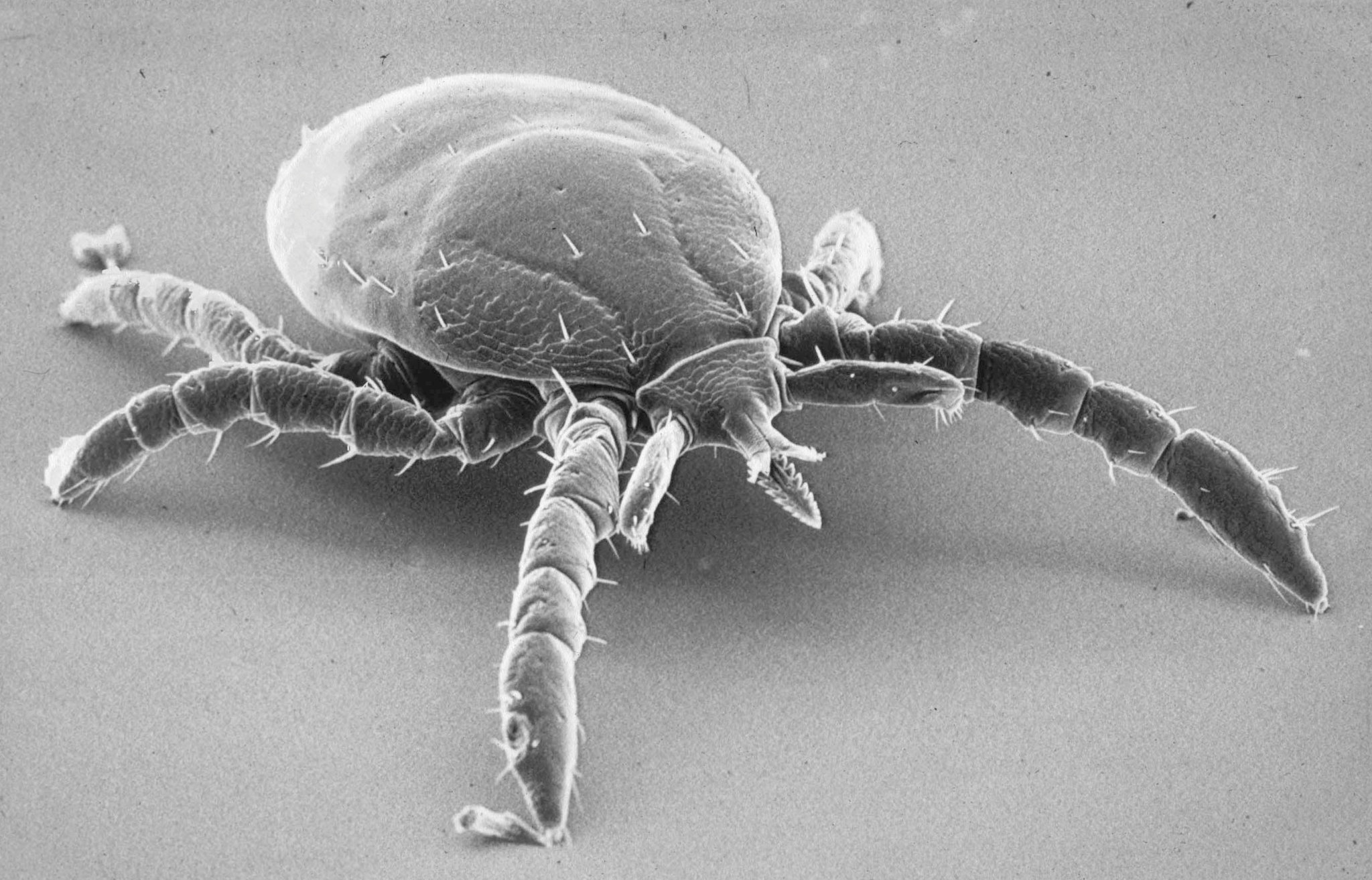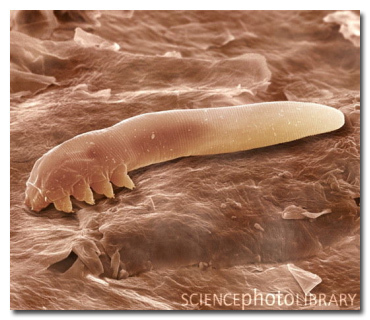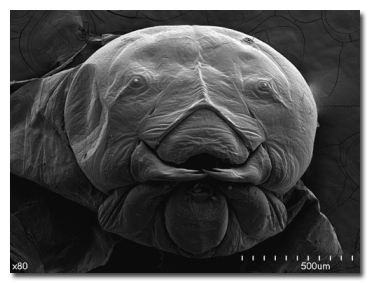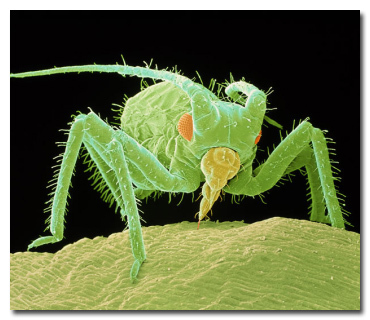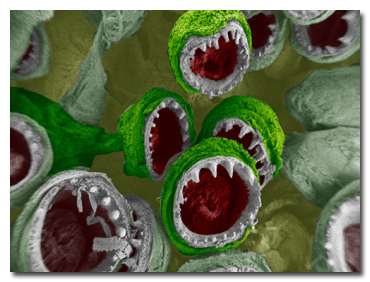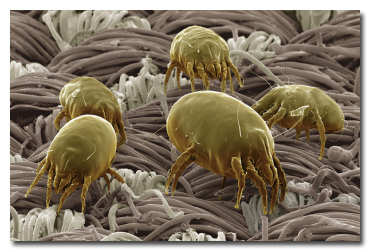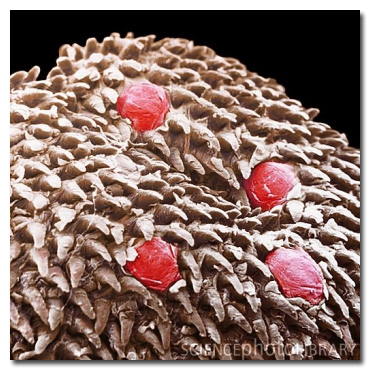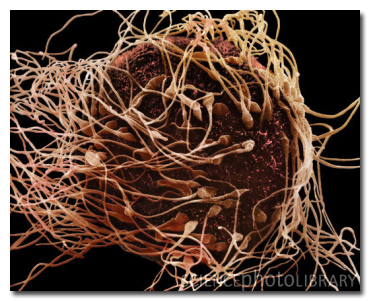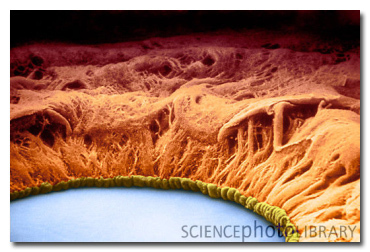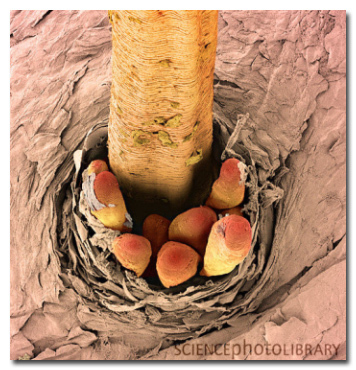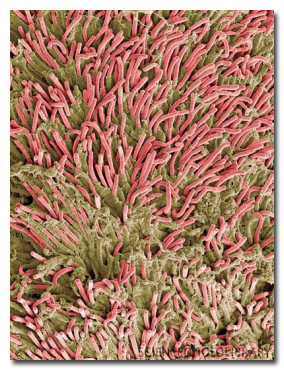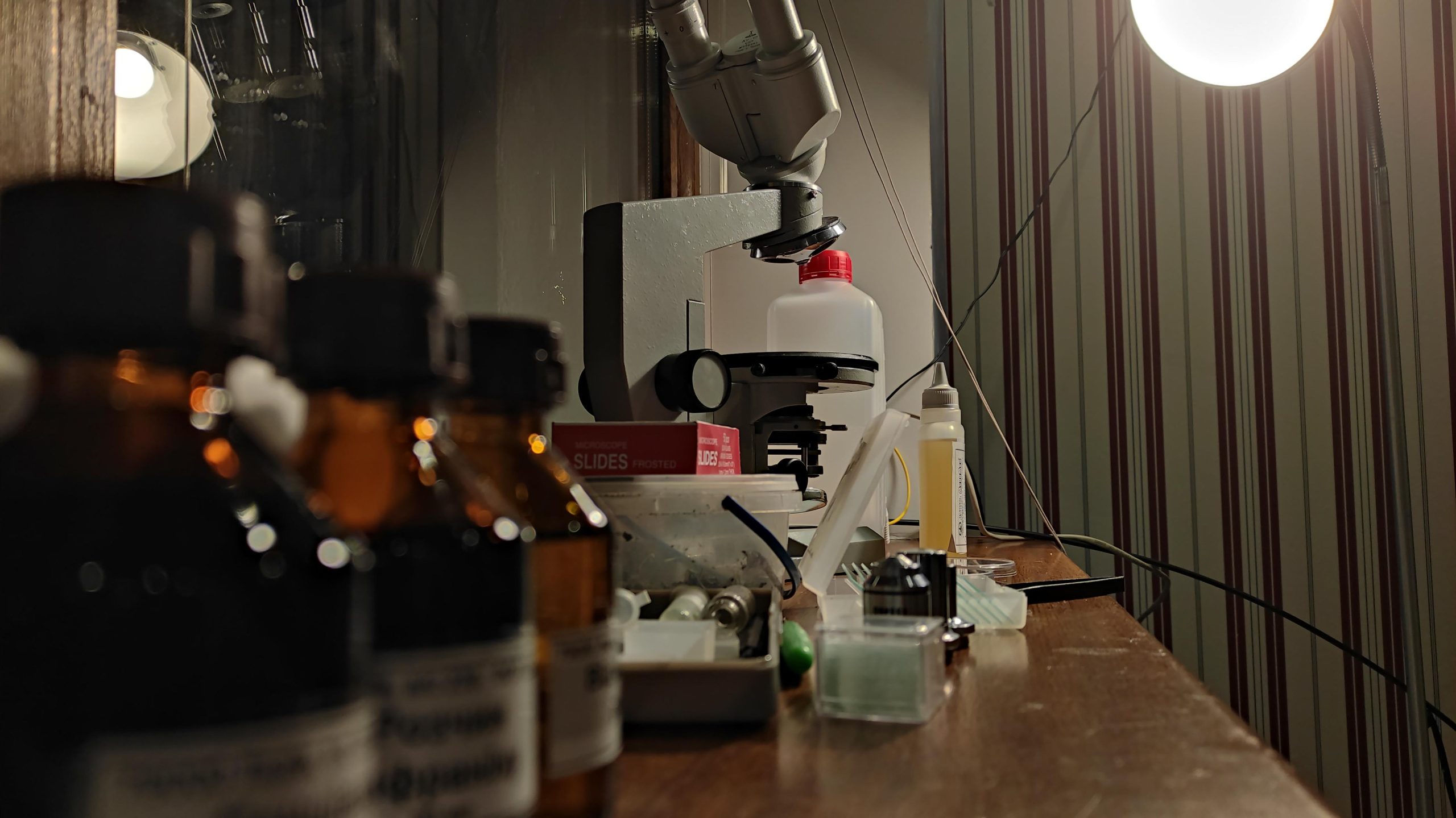
Check Out These Animals Under A Microscope
1. Maggot

Image Source: Reddit
Maggots look just as disgusting as you'd expect under a microscope. They have sharp fang-like teeth that make your skin crawl, and increases how frightening they can be. Its bad enough having to worry about having a maggot infestation, and this horrifying look at them, makes it ten times worse.Advertisement
2. Bdelloidea
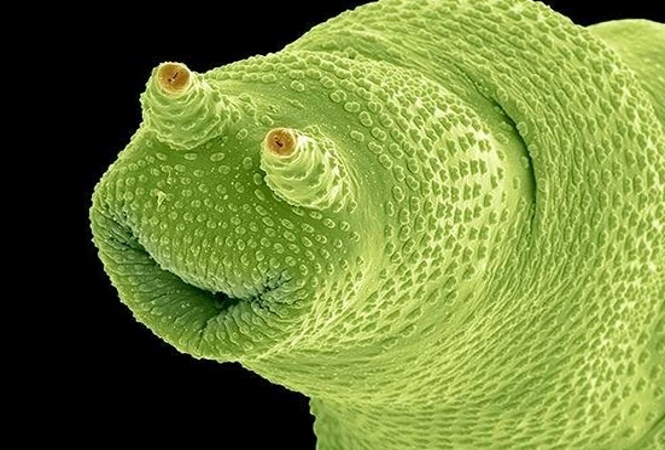
Image Source: Reddit
Bdelloidas have probably the strangest name, and funniest microscopic view, out of all the animals on this list. They look like an old sock puppet with tiny beads for eyes. They are probably one of the least harmful animals on this list as well, as they are a form of freshwater bacteria.Advertisement
3. Bristle Worm
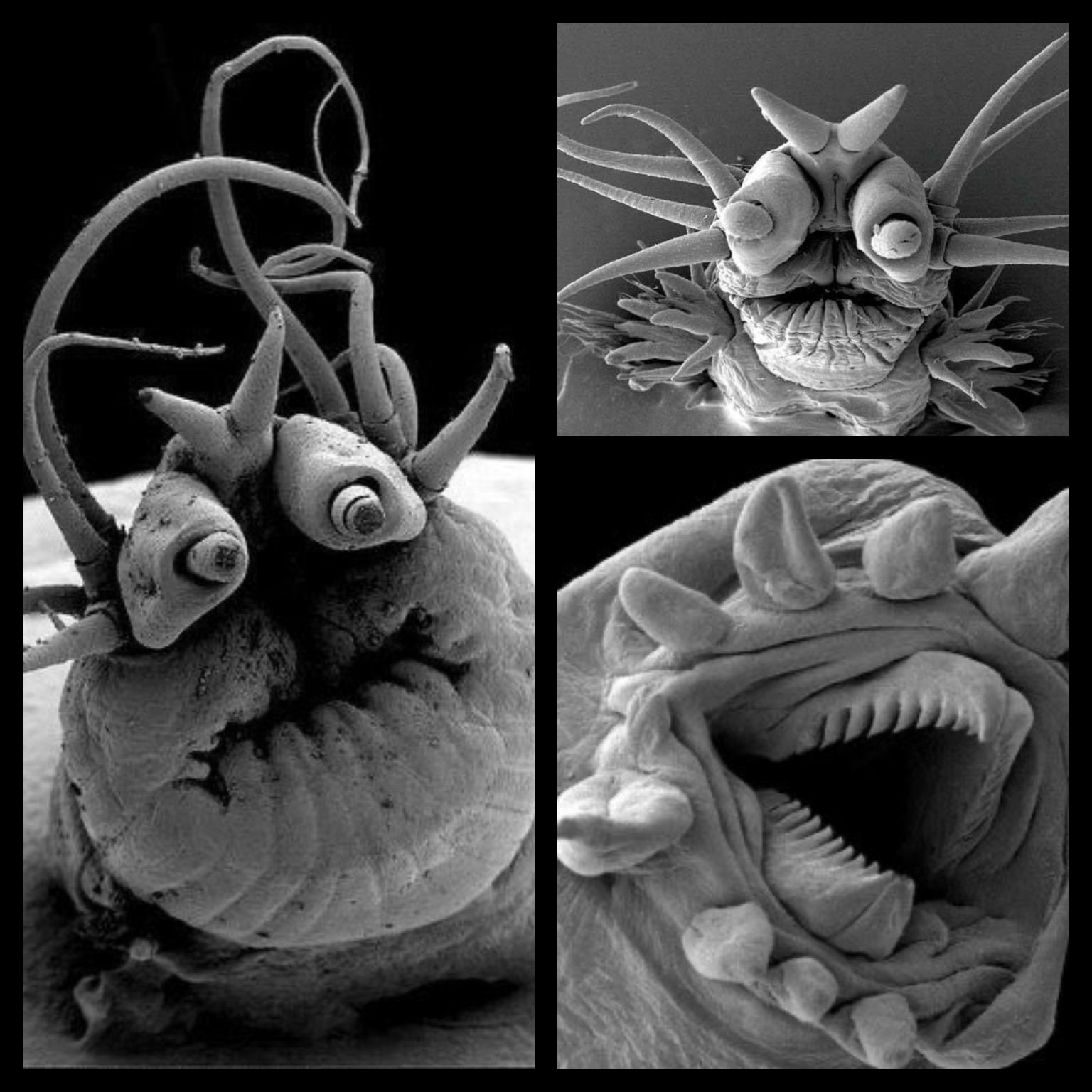
Image Source: Reddit
Bristle Worms on the other hand are absolutely terrifying under a microscope. They look as if they could embed themselves into your flesh, and tear their way back out again. There is something almost alien about them, which makes them even more disgusting to look at.Advertisement
4. Head Louse
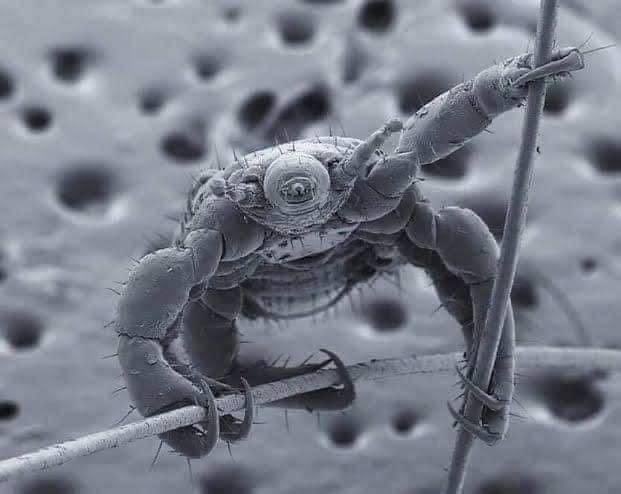
Image Source: Reddit
The microscopic view of a head louse makes your skin crawl, and your head itch. They are crab-like, and have spiny hairs that are disgusting to look at. Despite this, they are not the most menacing of animals on this list, and can be dealt with pretty easily.Advertisement
5. Caterpillar
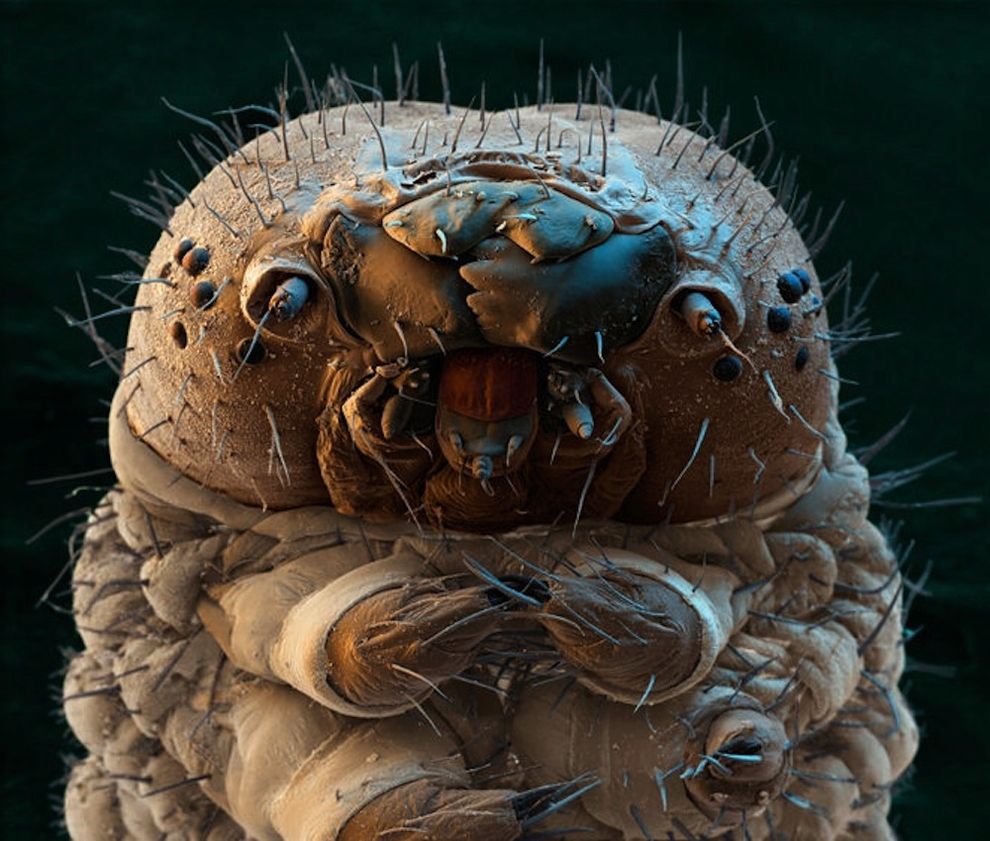
Image Source: Reddit
From a usual view, a caterpillar isn't the most threatening creature, and is a reminder of the appearance of butterflies. However, under a microscope they give off a very threatening, and somewhat ominous, vibe. They are seemingly eyeless, and similarly to a head louse, have spiny hairs all over their bodies.Advertisement
6. Ant
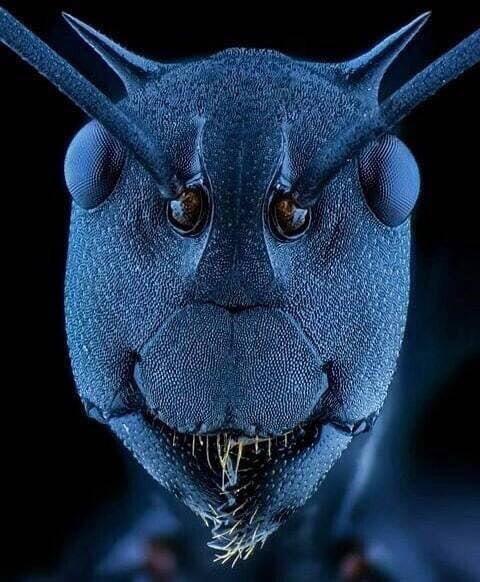
Image Source: Reddit
Now, moving on to probably one of the most terrifying animals on this list, an ant. They are horrifyingly ominous, and looking at them in such detail really makes your skin crawl. It's hard to believe that such a small animal can look so unnecessarily deadly.Advertisement
7. Mealworm
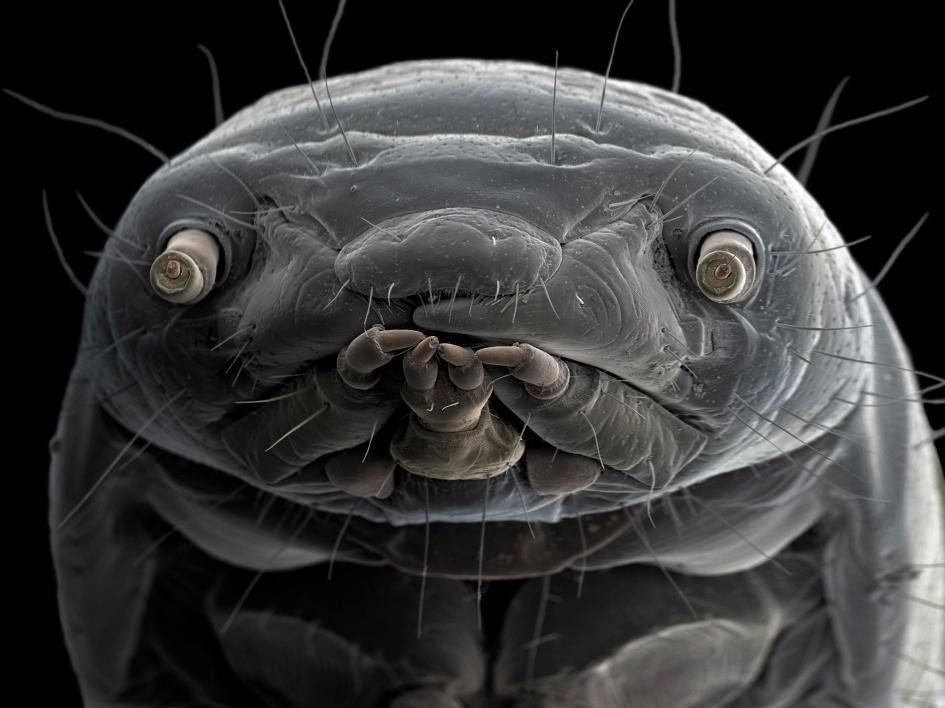
Image Source: Reddit
A mealworm doesn't look as creepy as some of the other animals on this list, but it definitely looks odd. They have strange shaped eyes, oddly placed 'pincers' and spindly, sparse hairs all over their bodies. These attributes seem to fit pretty well when you remember that mealworms are commonly used in bird food.Advertisement
8. Tadpole
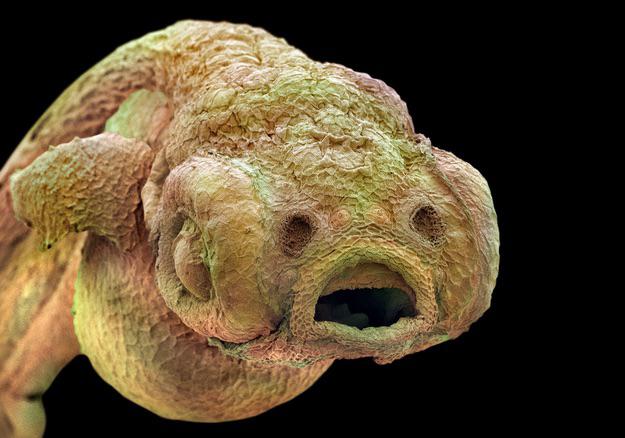
Image Source: Reddit
Tadpoles are a strange animal in general, and they look just as strange with a microscopic view. They really show us a glimpse of prehistoric life, when placed under a microscope. They have hollow, soulless features that are extremely haunting, and somewhat unnerving.Advertisement
9. Tardigrade (Water Bear)
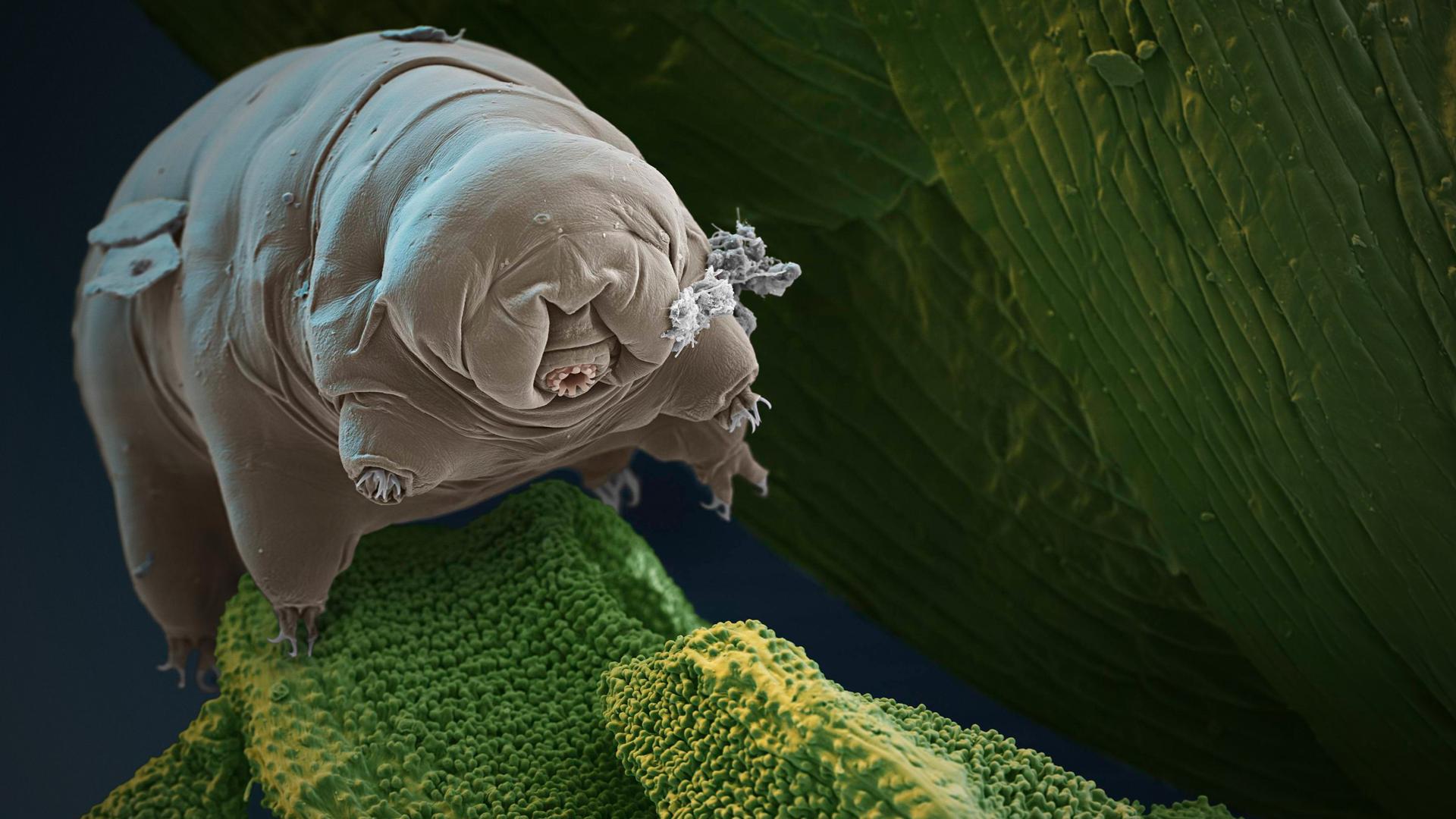
Image Source: Reddit
Tardigrades (also known as 'Water Bears') are a small breed of water-bound phylum that can survive within the harshest of living conditions. They look relatively harmless under a microscope. The only slightly menacing feature they have is their circular, fanged mouth.Advertisement
10. Wasp
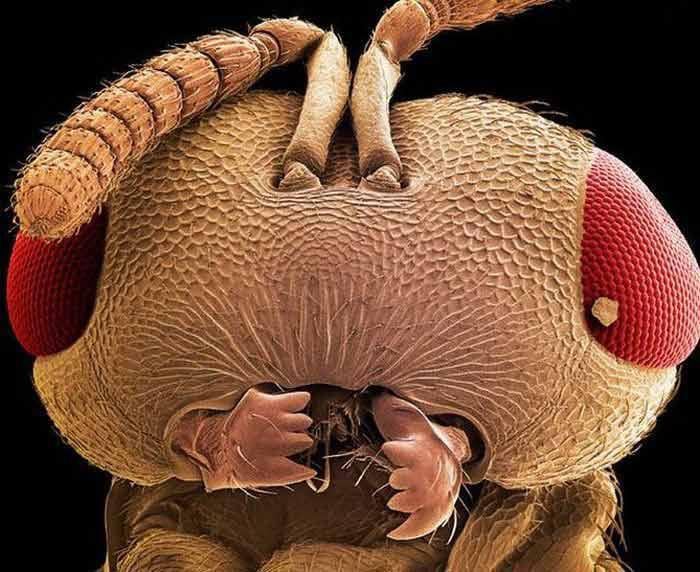
Image Source: Reddit
Now, when you think of a wasp, you probably picture the irritating, stinging insect that arrives just in time to try and ruin your summer. However, under a microscope, a wasp is not as menacing. They don't have any protruding fangs, alien-like spines or overly unnerving eyes. They seem relatively harmless; when it comes to inspection under a microscope.Advertisement
11. Isopod
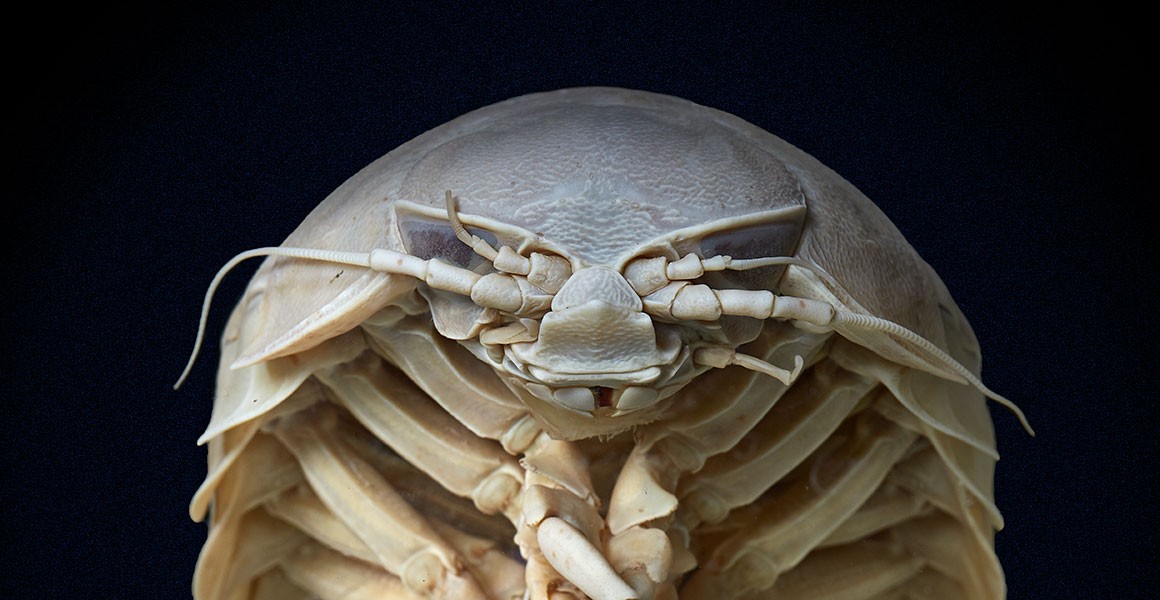
Image Source: Natural History Museum
Isopods are another reminder of prehistoric life within our modern living. They tend to dwell within aquatic environments, specifically within the depths of the ocean. They have a resilient exoskeleton that allows them to thrive within difficult conditions. Compared to some of the other creatures on this list, they have one of the least threatening presence under a microscope.Advertisement
12. Spider
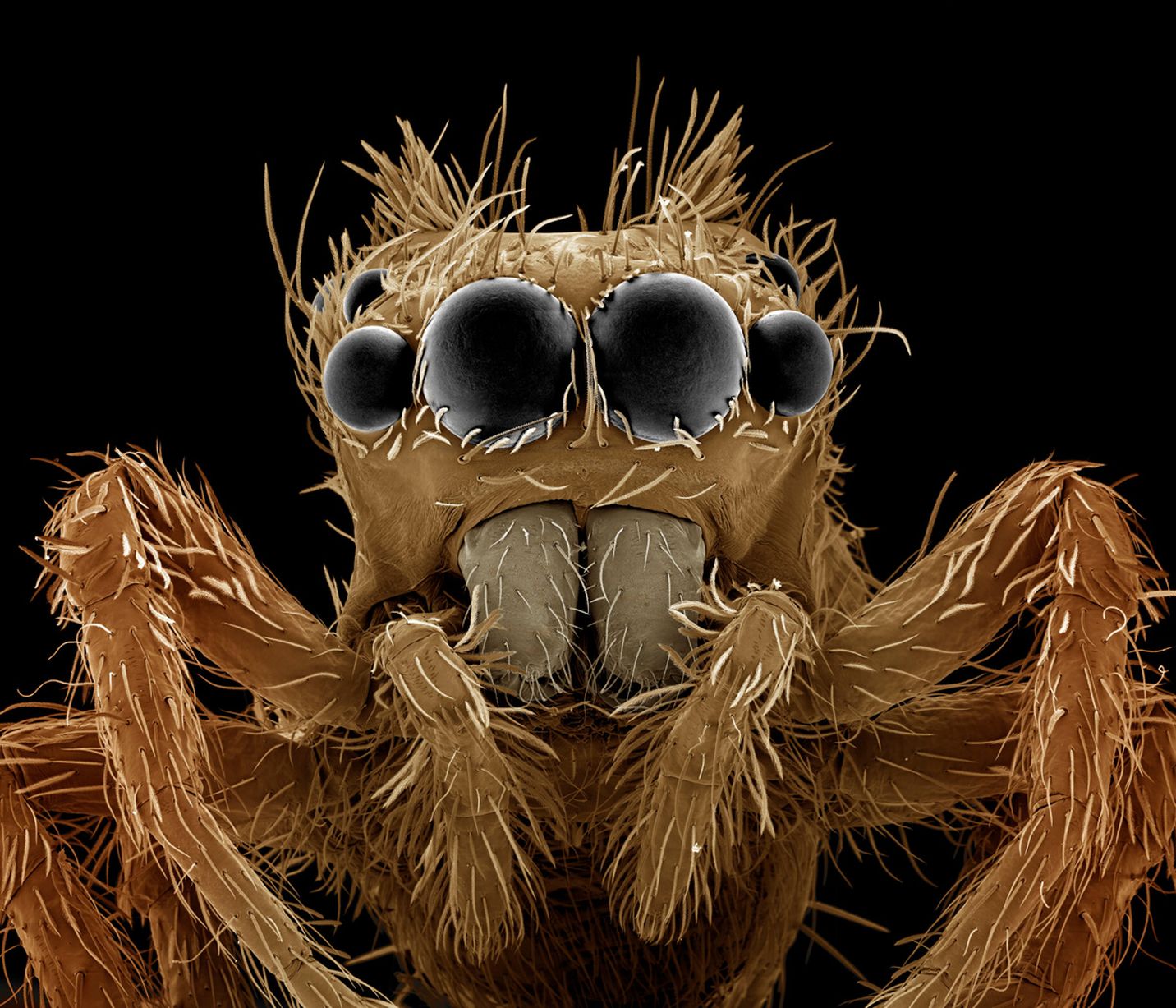
Image Source: Reddit
Spiders are one of the most common household insects, and arachnophobia is one of the most commons phobias around the world. Although many people despise them, spiders are strangely adorable under a microscopic view. They have large, puppy-dog eyes and their hairs don't cause your skin to crawl too much.Advertisement
13. Beetle
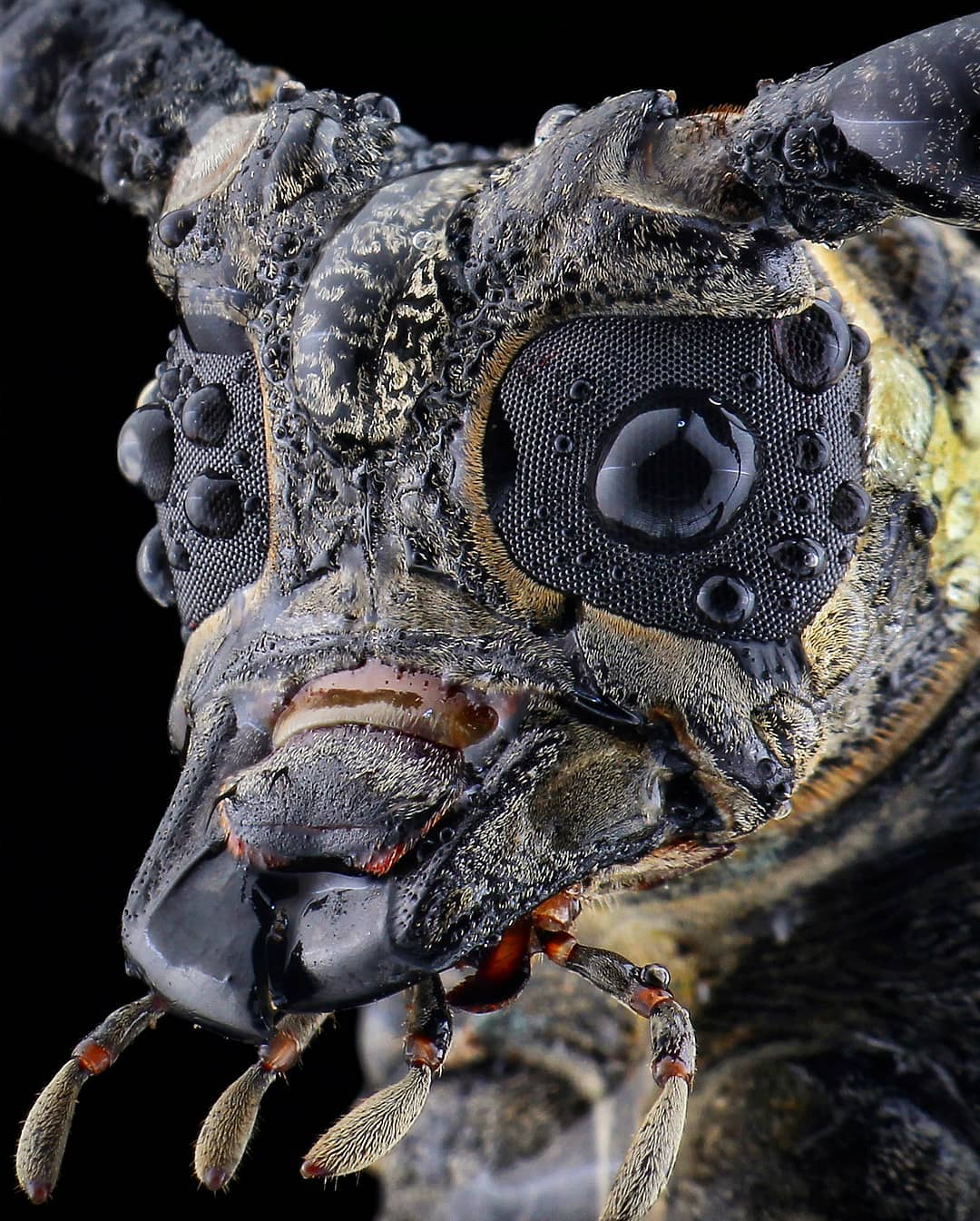
Image Source: Reddit
Another insect you may come across is a beetle. Beetles typically are not harmful, and don't have the most threatening presence. When it comes to viewing them under a microscope, it's a different story. Their protruding pincers, and array of beady eyes give them an evil aura.Advertisement
14. Flea
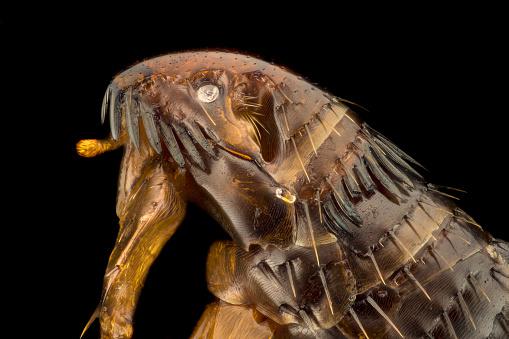
Image Source: Reddit
Another common household pest, especially if you have furry friends, is fleas. The mere mention of them, similarly to head lice, makes you squirm. They also look as bad as you'd expect under a microscope. Their hard shell gives the impression that they're somehow crunchy, which is completely stomach-churning.Advertisement
15. Mosquito Larvae
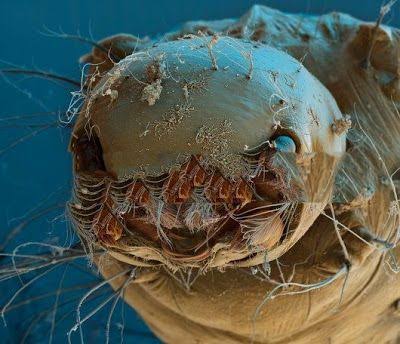
Image Source: Reddit
Mosquitos are one of the worst animals on earth. Not only are they generally irritating, they carry disease and infections across the world. Mosquito larvae are just as disgusting, especially under a microscope. They look like something from a sci-fi movie, and they're unnerving to look at (to say the least).Advertisement
16. Straw-Itch Mite
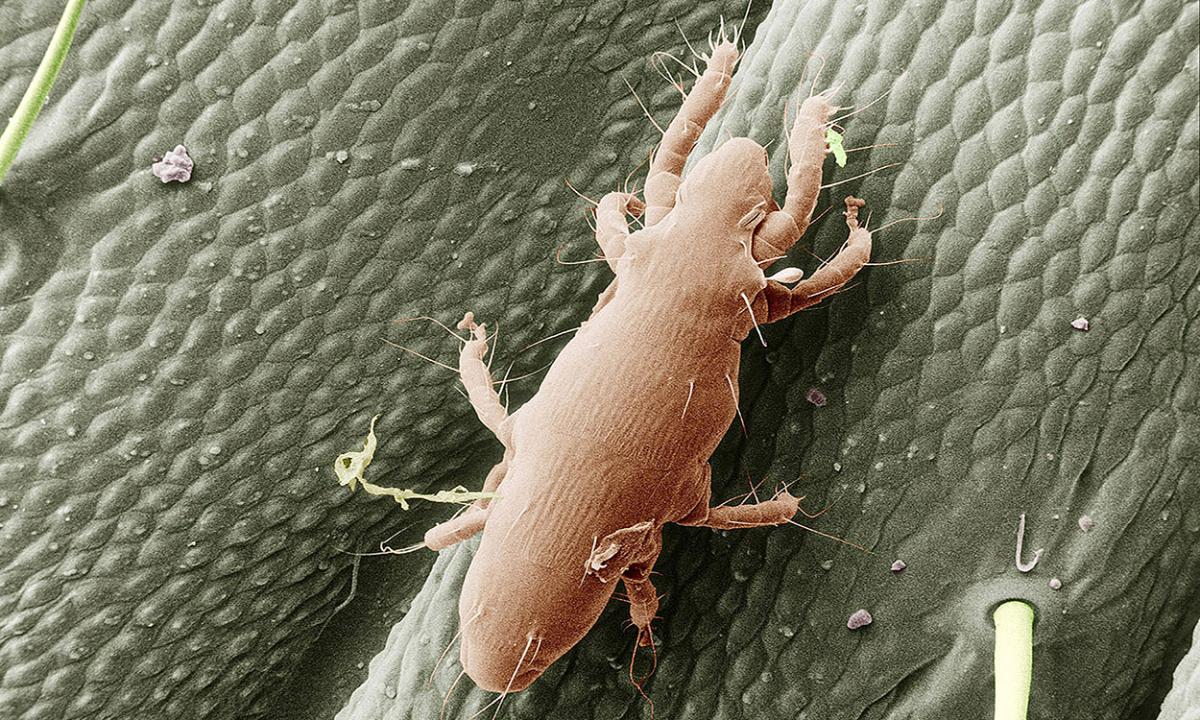
Image Source: South Dakota State University
Straw-Itch Mites are hidden pests that embed themselves mainly within crops and bales of hay. This makes it easier for them to latch onto your clothing, and spread within the confines of your home. Under a microscope, they bare some similarities to mealworms and fleas e.g. sharp spiny hairs.Advertisement
17. Dust Mite
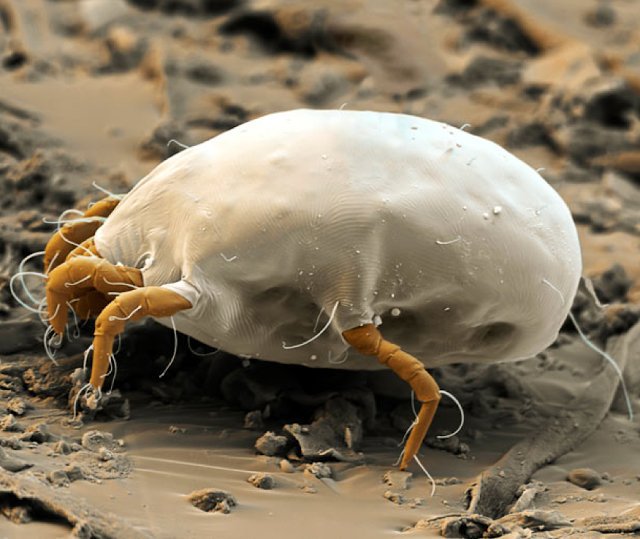
Image Source: Reddit
Dust Mites are another common household pest that can quite easily make a home for themselves in your living space. As you can tell from their name, they thrive within dusty conditions, and spread much quicker within enclosed spaces. They are often referred to as 'bed bugs'.Advertisement
18. Butterfly
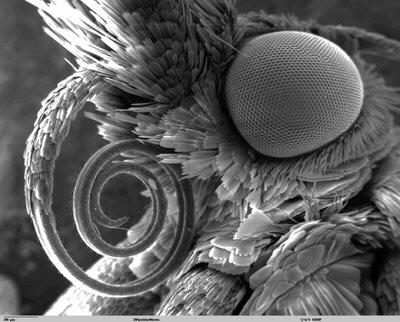
Image Source: Reddit
Butterflies are often symbolic of change and growth, as well as embracing inner beauty and letting your unique nature shine. Compared to their primary state (caterpillar), they have a much nicer microscopic view. They look soft, fluffy, inviting and completely harmless.Advertisement
19. Bee
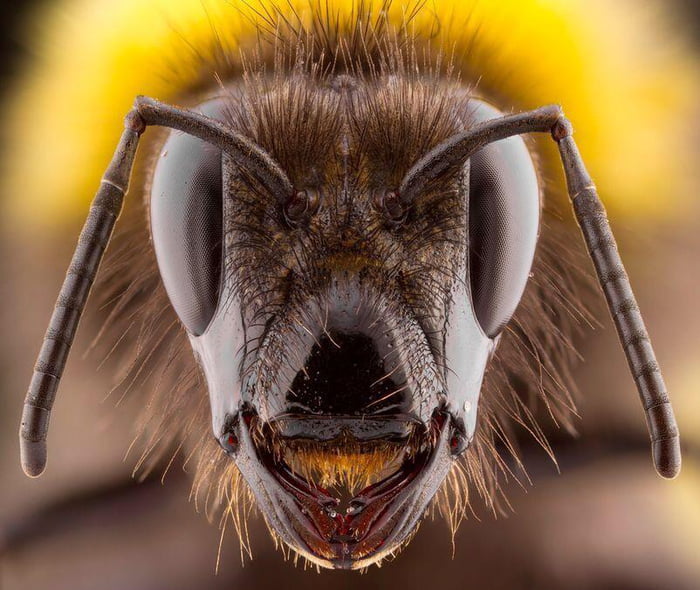
Image Source: Reddit
Bees are a key part to a thriving ecosystem, and play a major role in the maintenance of a beautiful garden. Some people do see them as a nuisance, but they are relatively harmless and are amazing pollinators. Despite this, they have a somewhat odd view under a microscope. Their face looks as if they're smirking, and are plotting something mischievous.Advertisement
20. Tick
Image Source: New York Times
Ticks are another common pest you can come across when you have a pet that roams around outdoors. They're disgusting to look at, and the fact that they gorge themselves on blood, makes them even more putrid. This putrid appearance extends to viewing them under a microscope, where their serrated mouth comes into focus.Advertisement
21. Ladybug

Image Source: Reddit
Ladybugs are another amazing critter that add to the beauty of any outdoor setting. Their bright red and black wings are a stunning sight on a summer's day. Similarly to a bee, they don't have the most threatening microscopic view, and they don't have any disturbing features.Advertisement
22. Housefly
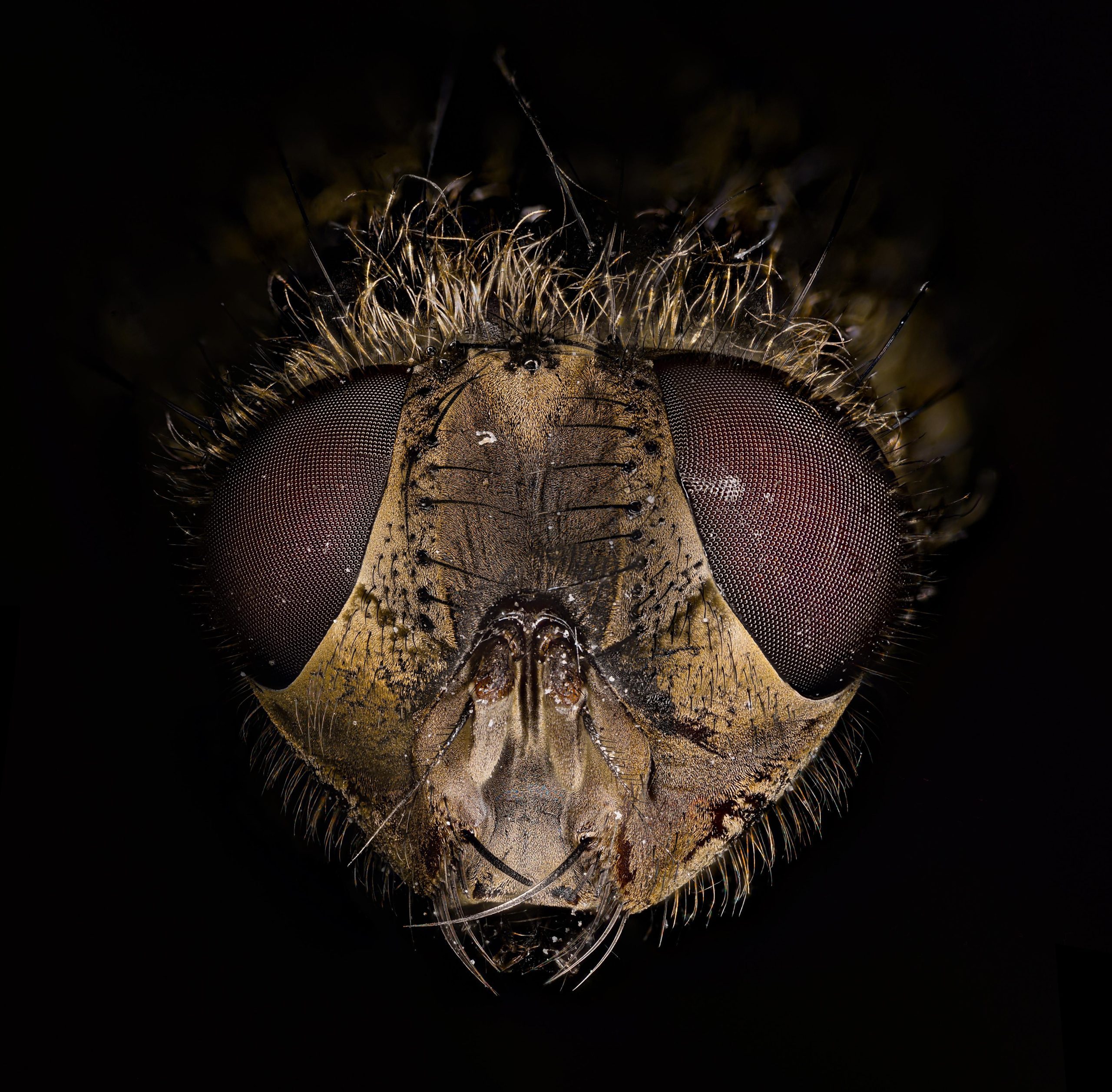
Image Source: Reddit
Moving onto probably the most common household pest: the housefly. They are one of the most irritating insects, and serve absolutely no purpose. They appear during the warmer months, and spread disease by flying around any food they can find. Under a microscope, their disgusting eyes are brought into focus, as well as their strange head shape and proportions.Advertisement
23. Grasshopper
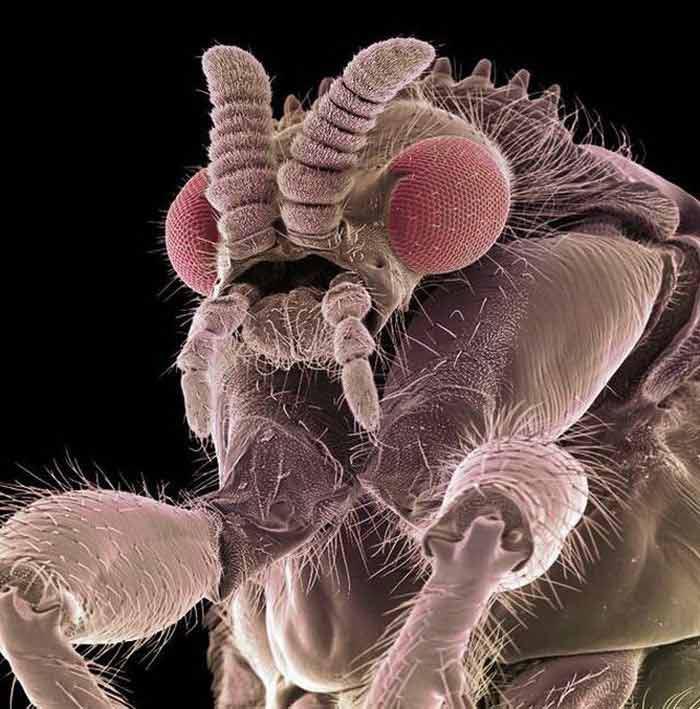
Image Source: Reddit
Grasshoppers tend to make an appearance in more rural settings, during the summer. They aren't much of a nuisance, and are identified by their distinct chirping sound. Again, they do not have any kind of threatening presence when under a microscope, and they actually seem relatively docile.Advertisement
24. Dragonfly
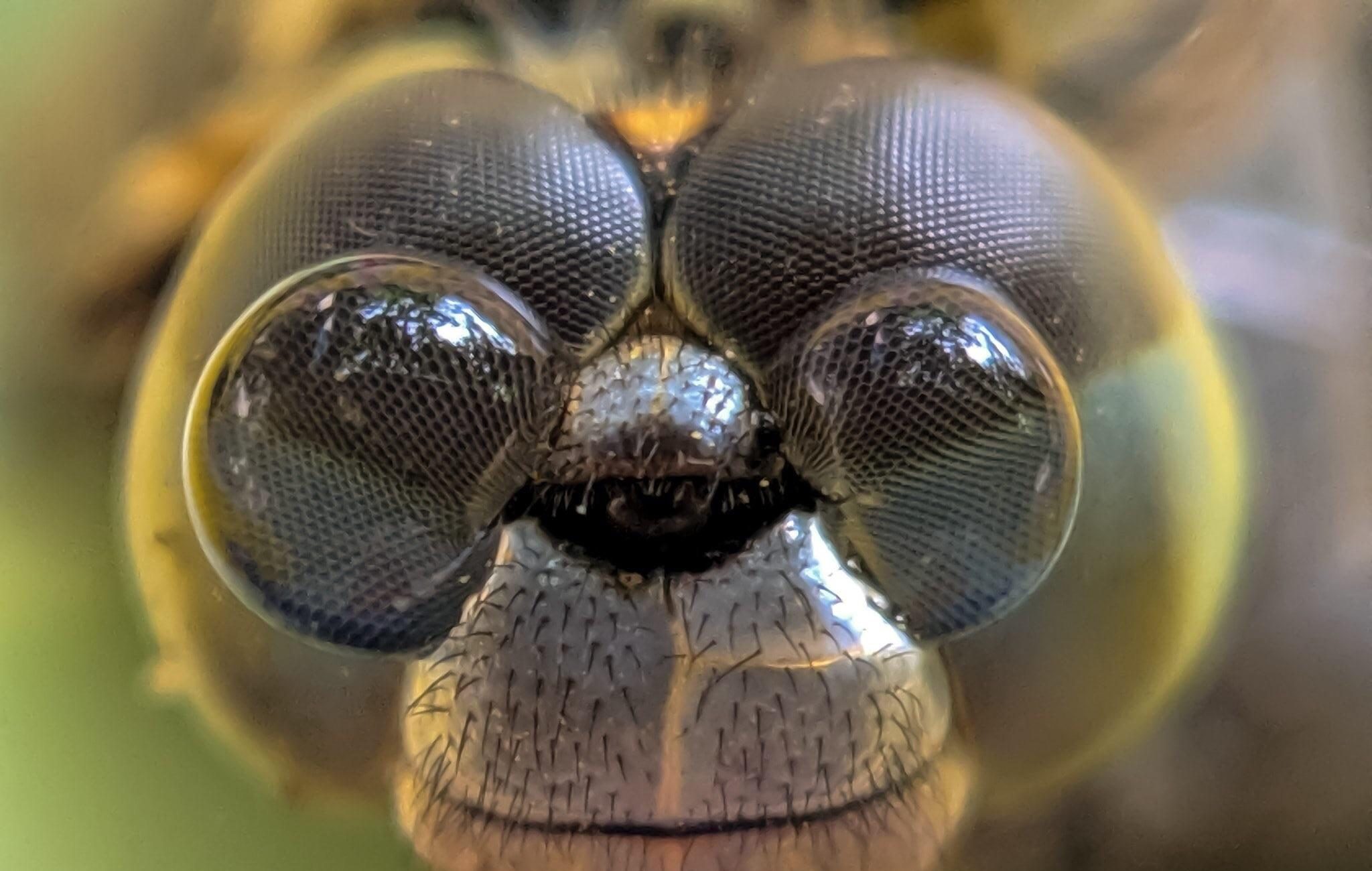
Image Source: Reddit/PJM Photography
Moving onto probably one of the least terrifying animals on this list: the dragonfly. Another summer insect, that hovers effortlessly through the air with grace and fleeting speed. Their iridescent wings are the most noticeable feature, and that is really amplified under a microscope. Their faces also seem to bear a kind expression, that diminishes any possible threat.Advertisement
25. Centipede
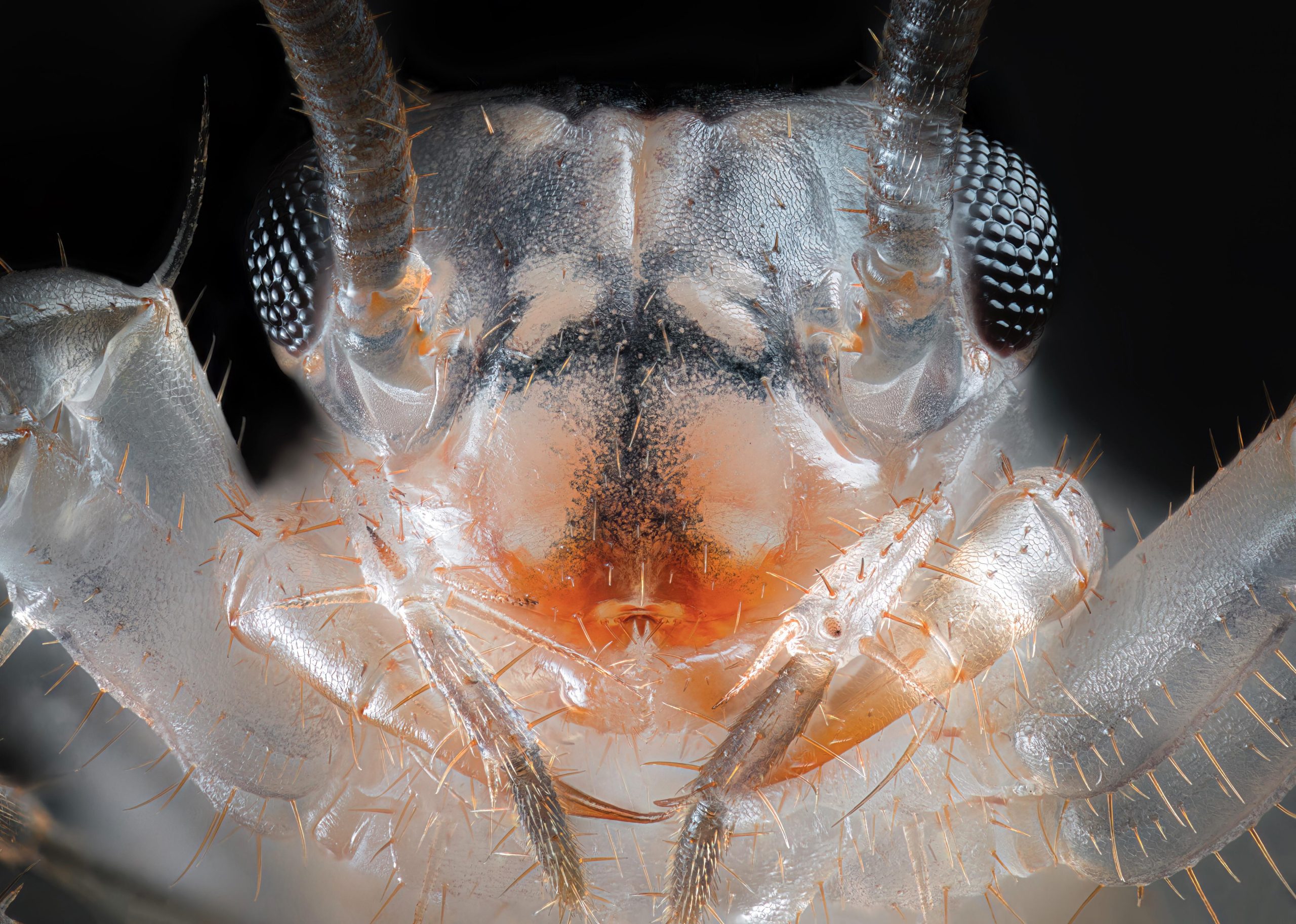
Image Source: Reddit
Centipedes are usually found within woodland areas, and immerse themselves into the earth. Of course their long, hard-shelled bodies are their distinguishing characteristic, alongside their many legs. Centipedes are often classed as 'creepy', and this is definitely reflected in their microscopic view.Advertisement
26. Cat

Image Source: Reddit
Cats are a great companion to have; they're low maintenance, provide strong companionship for people and are relatively care-free. As we all know, cats groom themselves with their tongues. What some people might not know, is that their tongues have tiny spines, which act like the bristles of a hairbrush (when they groom themselves). These spines can be seen in much greater detail via a microscope.Advertisement
27. Zebrafish Larvae
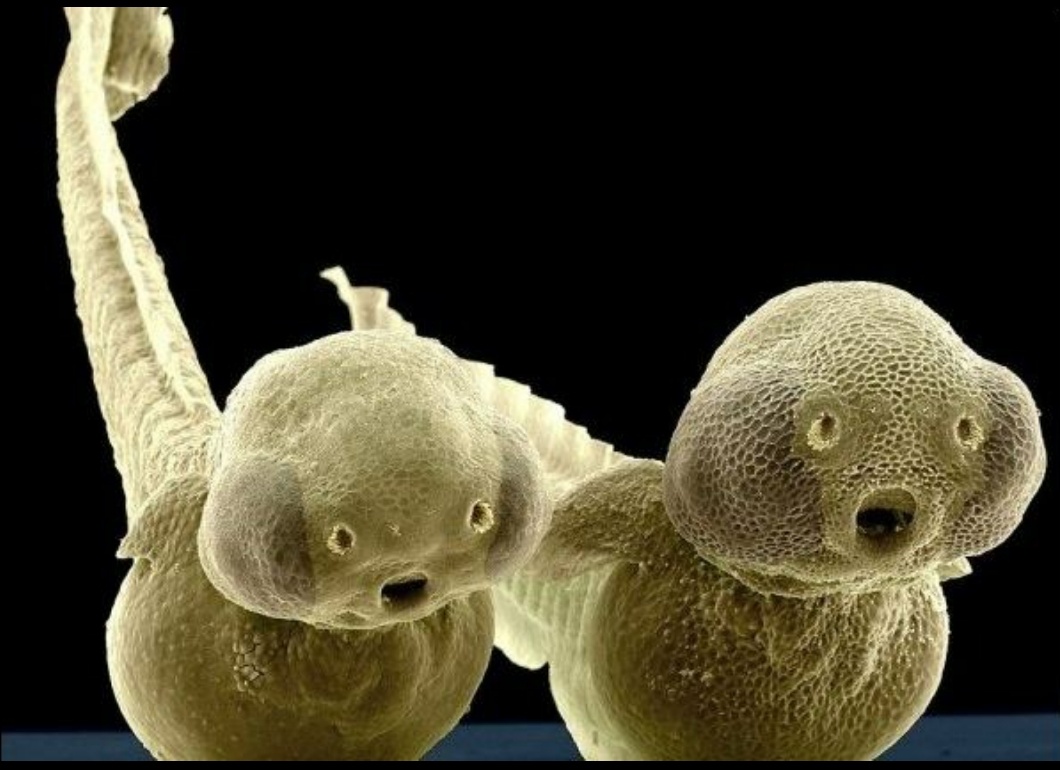
Image Source: Reddit
Zebrafish Larvae are another aquatic animal that tend to thrive within freshwater environments such as: swamps, lakes and rivers. Under a microscope, their strange elongated bodies, and hollow facial features become the focal point. They don't look particularly horrifying or harmless.Advertisement
28. Giant Hornet
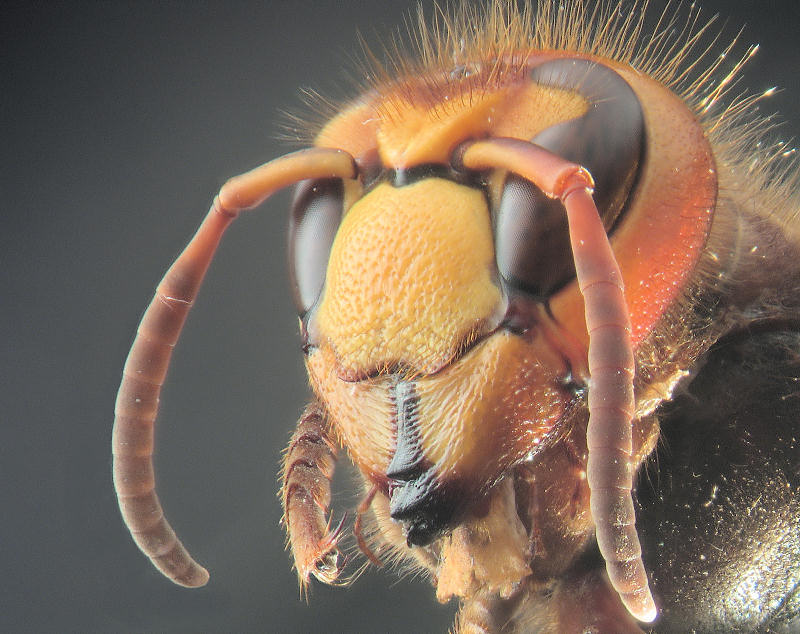
Image Source: Photomacrography
Giant Hornets are commonly found in Japan, as well as certain climates around the world. They are the larger and more deadly cousin of the wasp, and their venomous sting has been known to paralyze people. Their deadly nature is clear, especially from a microscopic view.Advertisement
29. Wood Louse
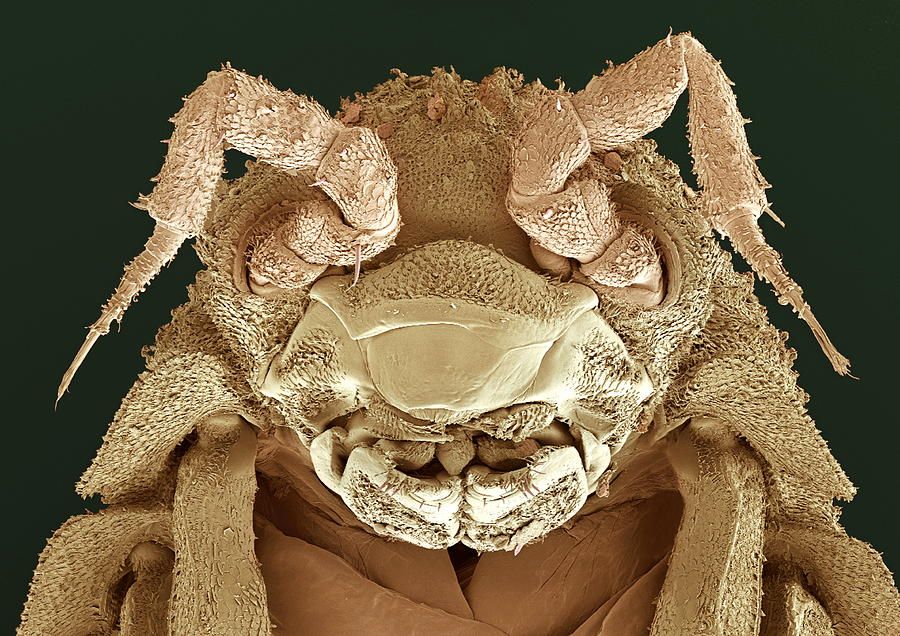
Image Source: Pinterest
Wood Lice are similar to centipedes, as they dwell in woodland areas. As their name suggests, they thrive within most forms of wood (especially rotting tree trunks and logs in general). They are pretty small in size, but when placed under a microscope, the sight of them makes your skin crawl. Their seemingly eyeless face, and lack of other facial features, gives them a menacing presence.Advertisement
30. Moth
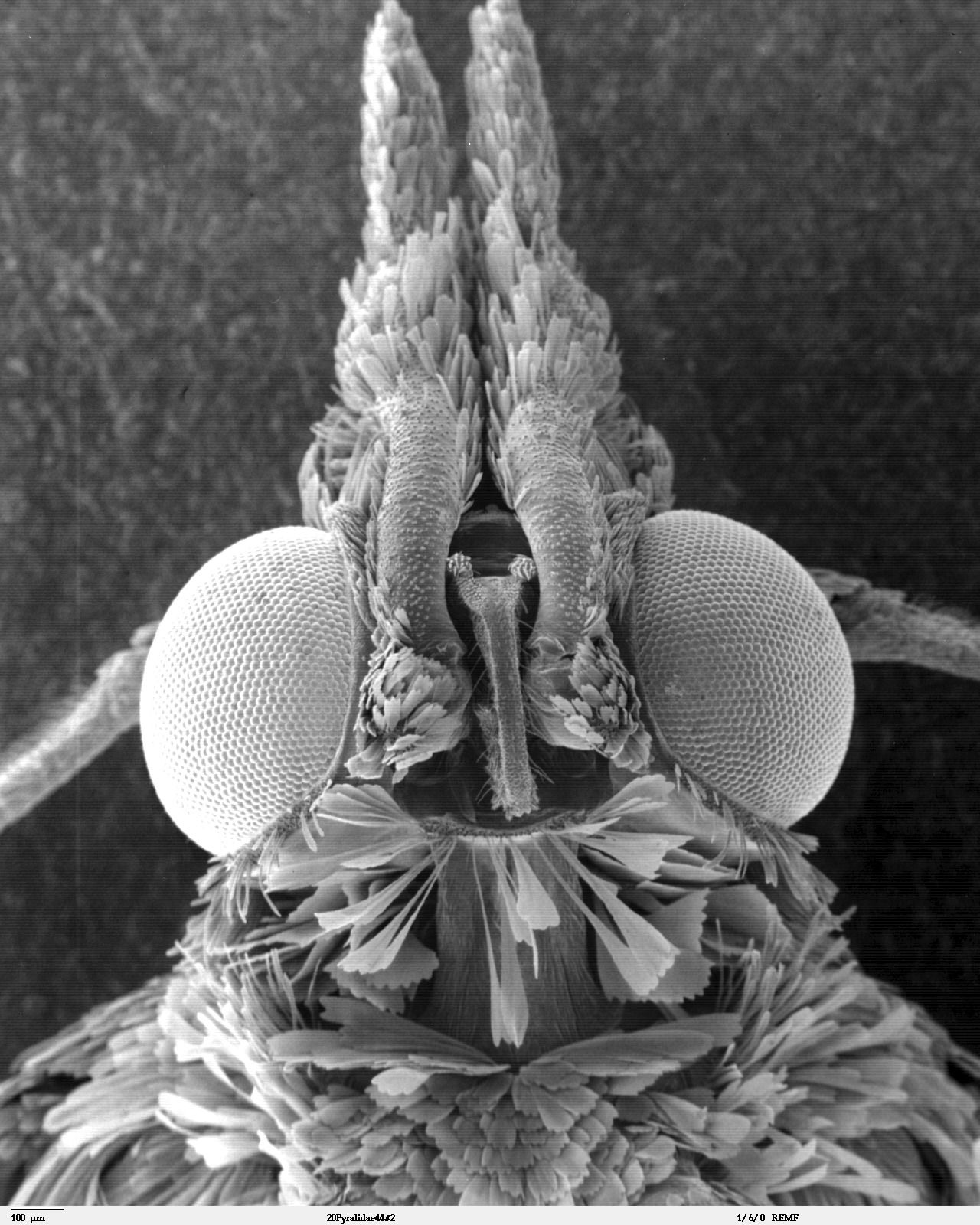
Image Source: Pinterest
Moths are often deemed to be the butterfly's 'ugly' cousin, however there are many species of moth that are both interesting and beautiful. Their extremely fine hairs provide them with a seemingly 'fluffy' textured and they have much larger eyes in comparison to a butterfly. These larger eyes are a focal point under a microscope, alongside their longer antenna. Moths are probably one of the least threatening animals on this list.Advertisement
31. Hydrothermal vent worm
image source: cracked.com
You might never have thought a worm could ever have teeth looking things like that! It sure gives a shark a run for its money... or it would if it was actually the size of a shark, which luckily it's not. Even when they're not being looked at under a microscopic, hydrothermal vent worms are seriously tiny - so much so, that you probably wouldn't see them anyway. They're named after the hydrothermal vents that they live by under the ocean - which is fantastic news now that you know what they really look like, and know they're not going to be in your home anytime soon.Advertisement
32. Demodex
image source: cracked.com
Demodex are a classification of mites... but they're a type of mite you're going to regret ever finding out about in just a second when we explain. The good news is that not everyone has demodex, as you only get them if you happen to have this parasitic mite and need to see the doctor. So what are we talking about? Well, demodex - when they're present - will live on the eyelashes.. of people. And just in case you wanted a bit more information, they're not even sort of hanging on your lashes, they're buried in the root itself. They're also known as face mites. So there you go.Advertisement
33. Bee larvae
image source: cracked.com
Bees have tons of larvae that of course eventually hatch into full bees, but this is just one solitary bee larvae - and now that we've seen it, one is quite enough, thank you very much. Any and all types of bee have larvae that look pretty similar, so you can expect any sort of bee larvae to look like this (great news). From far away, they look very similar to small worms of light-colored maggots. Which doesn't make this any easier, we know. We don't know what's more offputting, its weird crinkly skin or those dead, soulless eyes.Advertisement
34. Aphids
image source: cracked.com
Aphids can be seen by the naked eye at their normal size - they sort of look like watermelon seeds, and are around the same size, green in color. You usually won't find an aphid alone, as they like to congregate in groups, like a lot of insects do. But just in case you wanted to know what these innocent-looking seed like creatures look like under a microscopic, we got you - and we bet you wish you'd never asked. Not the worst thing on this list by a long shot, but definitely something you won't be setting as you phone wallpaper.Advertisement
35. Squid
image source: cracked.com
Okay, we should probably explain what you're looking at here (so you can book in your therapy early). This isn't a whole squid itself under a microscope - which, let's be honest, would actually be terrifying. This is actually an extreme close up of the suckers on a squid. Which, from the outside, you never really wanted attached to you, but now you know they look like tiny green alien monsters with very sharp teeth and mouths that look like the pits of hell... you definitely won't be going for a swim in the ocean anytime soon, will you?Advertisement
36. Flat mite
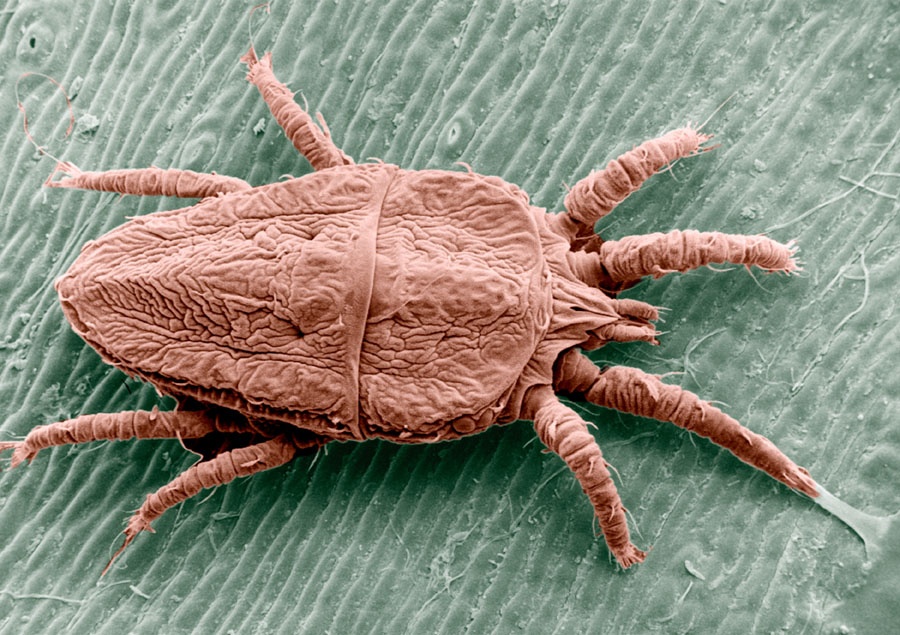 image source: uk.pcmag.com
image source: uk.pcmag.com
It might sound like something you'd order from a coffee shop, but definitely don't get confused with this one - it's definitely not something you want near you! If how it looks under a microscope is anything to go by, anyway. Also known as the brevipalpus phoenicis, if you want the full scientific name (because why wouldn't you), this is known as the 'false spider mite', too. Great. The good news is, this mite will target food crops instead of us.Advertisement
37. Peacock mite
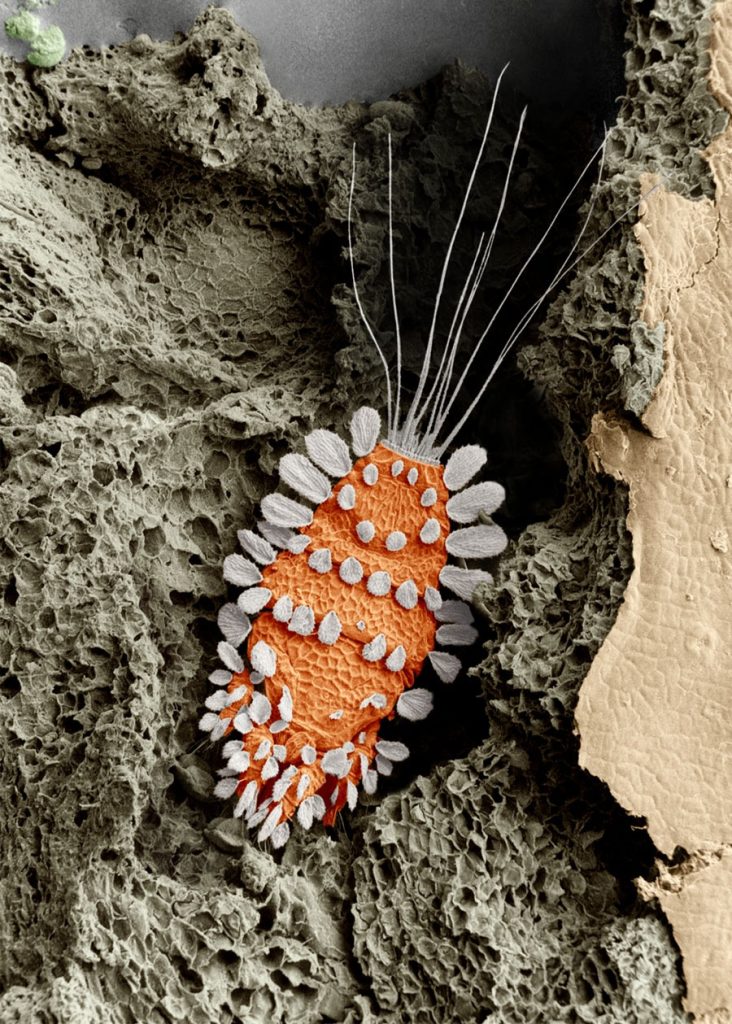 image source: uk.pcmag.com
image source: uk.pcmag.com
Surprisingly, this could actually be considered food looking compared to some of the horrors on this list! And we can see why it's called the peacock mite due to those striking weird feather things. The peacock mite is tiny, but worth looking at under a microscopic to see that bright orange skin and white feathers. The peacock mite is usually found in the tropics, because it likes to feed on citrus fruit and crops - maybe that's why it's so brightly colored? It's been getting all its vitamin C! You've probably had one of these on you at some point if you vacation in tropical places (you're welcome).Advertisement
38. Rust mite
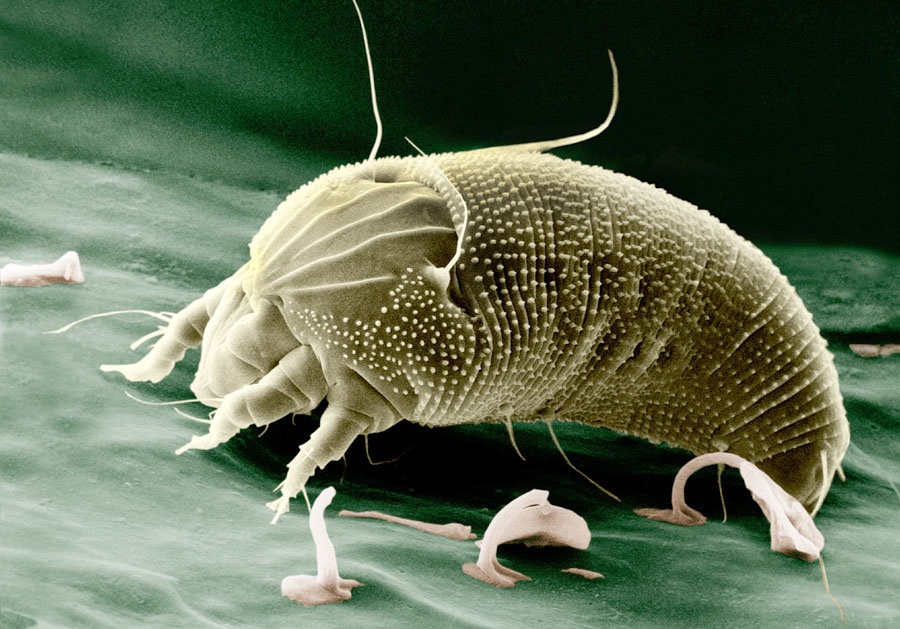 image source: uk.pcmag.com
image source: uk.pcmag.com
One thing we definitely don't need to see more of is mites, but here we are again. The rust mite - different from the dust mite - is also known as the aceria anthocoptes scientifically, and it can usually be found in America - North America specifically - targeting thistle plants. They only grow up to a size of 0.007 inches long, which is the good news - the bad news is that probably means you won't see them. This mite has a ridged shape to it with tiny little white dots all over it and more chunky legs at the front so it can feel out the perfect thistle!Advertisement
39. Soybean cyst nematode
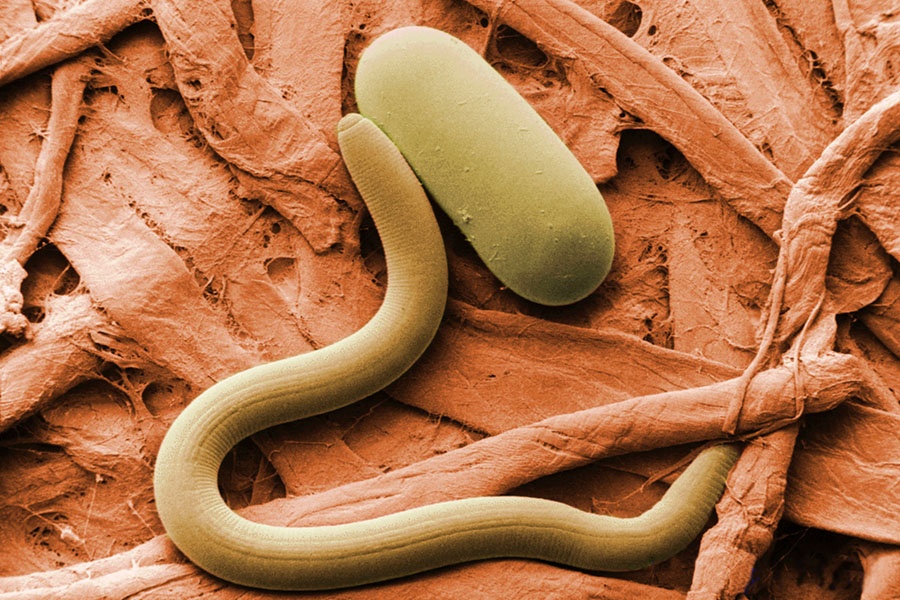 image source: uk.pcmag.com
image source: uk.pcmag.com
Even the name of this just sounds all kinds of wrong, but even more so when you see what it actually looks like. The snake-like creature on the left is the thing we're talking about, and although it looks huge on this picture, we just have to remind ourselves that in reality it's actually tiny, to save on the nightmares. You don't have to worry about this going near you (usually) unless you take soybeans to bed, because that's what this thing likes to spend its time with/on. The female will actually get big enough to see with the naked eye, while the male can only ever be seen under microscope!Advertisement
40. Colorado potato beetle
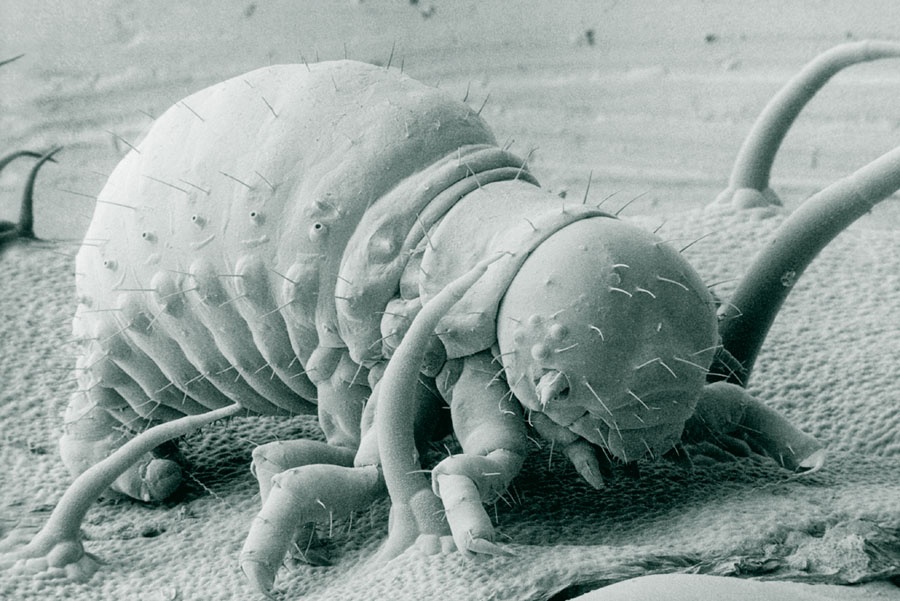 image source: uk.pcmag.com
image source: uk.pcmag.com
While this isn't as horrifying as that up-close-and-personal picture of a beetle's face earlier - never again thanks - it's still pretty much nightmare-fuel. The Colorado potato beetle is not named after the fact it sort of resembles a potato (because it doesn't!) but because it targets potatoes, and is basically the bane of anyone's existence who is trying to grow some pretty nice potato crops. It's just under half an inch in size, so you would probably spot it on your potatoes, and when not under the microscope it actually has a striking stripy look!Advertisement
41. Copepod
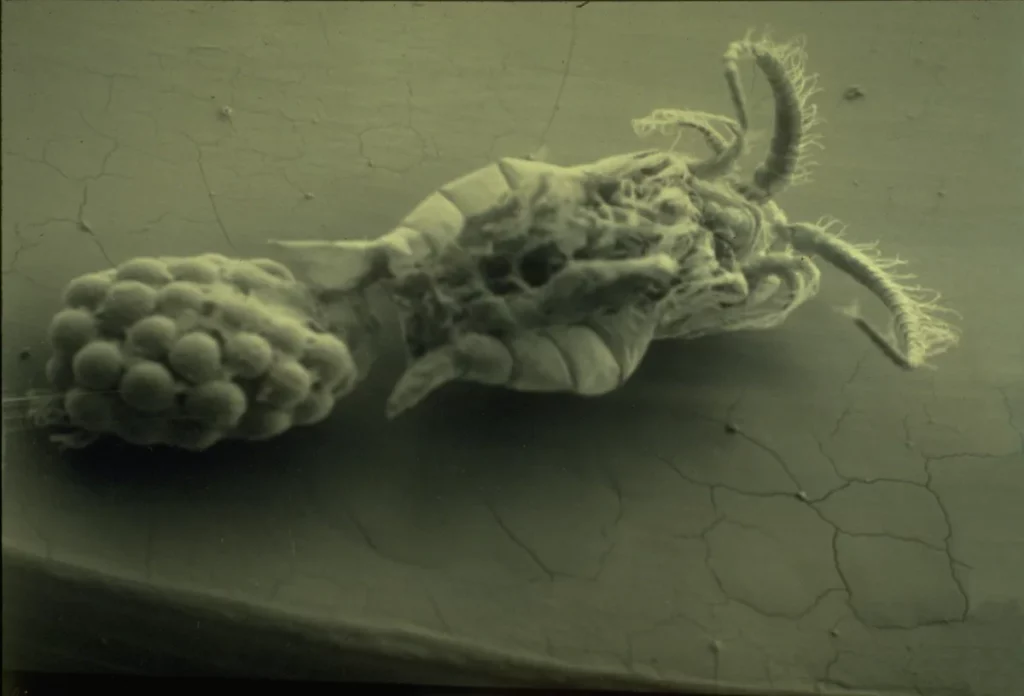 image source: uk.pcmag.com
image source: uk.pcmag.com
This is just another whole load of nope, but we best explain this one. This photo actually shows two separate things: the copepod (or nope-pod, as we're calling it), and the vibrio cholerae. The copepod is on the right, and actually isn't the issue here. The cholarae is on the left, and it's this thing that's the problem! The copepod isn't really a threat to humans, but the cholarae latches itself to the copepod - without its consent, probably - and is actually a well known collection of bacterium spores, which do pose a problem for humans!Advertisement
42. Other creepy things under a microscopic! A staph infection
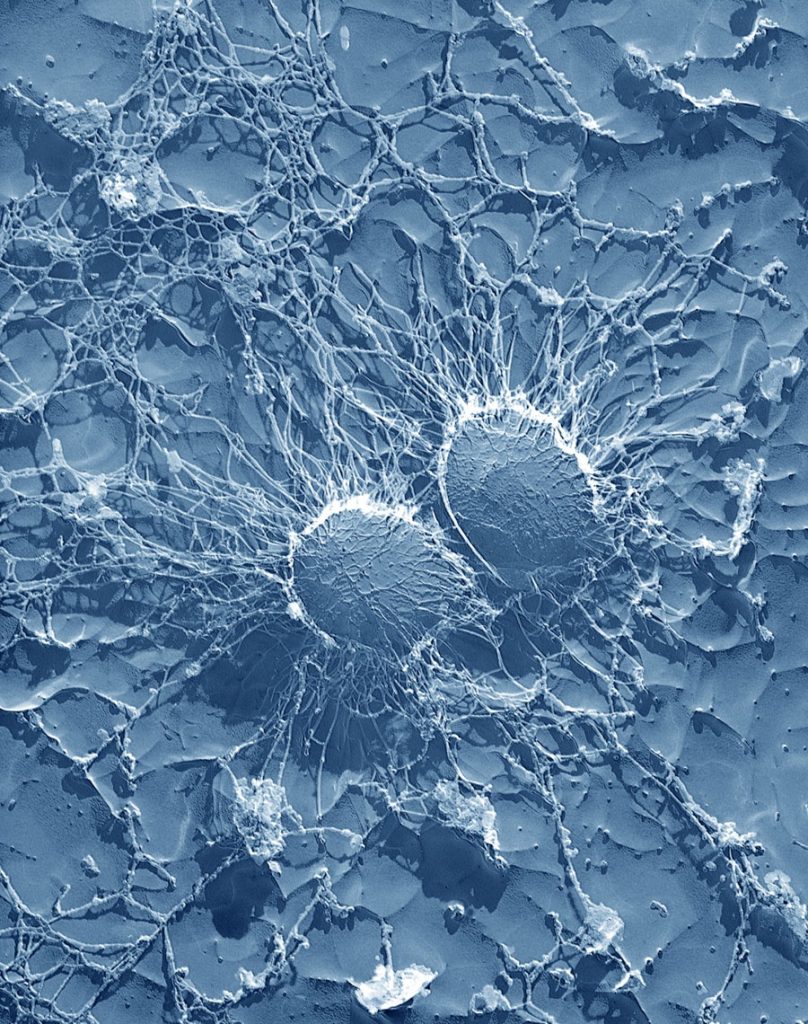 image source: uk.pcmag.com
image source: uk.pcmag.com
If you're lucky, you'll never have actually had a staph infection, but you might have heard of it. A staph infection can often look like a simple spot on the skin, which is why it can be dangerous to pick or squeeze it if you don't know what it really is. Staph infections can often happen from unhygenic things like dirty makeup brushes. This is actually what a staph infection looks like under a microscope, and to make it worse, it's actually classed as a 'bug' on the skin. It's a member of a bug family and is a common cause of skin irritations.Advertisement
43. Epoxy resin
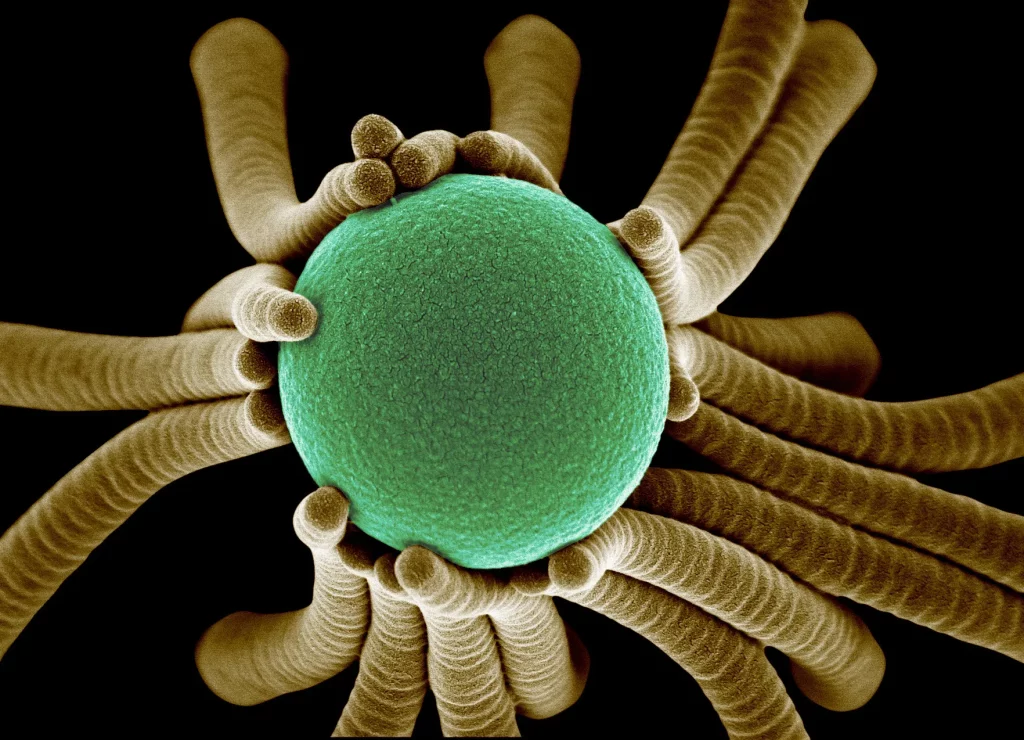 image source: uk.pcmag.com
image source: uk.pcmag.com
You might have heard of epoxy resin, which is a substance often used in manufacturing and even small-time crafts as a means to use as an adhesive. It usually comes as two parts which can bond together, good for repairs on different materials. What you see here is the bonding process of epoxy resin under a microscope! The arm looking things are the fibers of the resin itself, which are assembling around a small ball of polystyrene material. In theory, it shouldn't be creepy at all, but when you see it like this looking like lots of weird arms, it definitely is!Advertisement
44. Your bed pillow
image source: cracked.com
If you haven't changed your bedsheets in a while, or if you're one of those people who things na, I'll do it in three weeks time, what's the big deal? You need to see this... We already know dust mites and bed bugs exist, we're all aware of it, but because we can't actually see them (usually) we easily forgot what could actually be going on in our cozy bed space when we don't clean as often as we should. This is what your pillow might actually look like - yes, the place where you're putting your face - when it has dust mites. But the thing is, dust mites can still be there even when your sheets are relatively clean!Advertisement
45. Your tongue
image source: cracked.com
Seeing that cat tongue up close and personal was sort of fascinating, but mostly because it was a cat's tongue and not a human tongue, so you could separate yourself from the horror of it. Well, we have some news for you - this is what a human tongue looks like under a microscope. Now you can think about this the next time you're kissing someone... or eating something... or brushing your teeth.... or anything, really. The tiny spikes on the tongue are known as filiform papillae, and they're there for a good reason, obviously, but it doesn't make them any easier to look at.Advertisement
46. Human fertilization
image source: cracked.com
We've all seen at least one photo of a female egg and a male sperm, like in school science class when you weren't really interested, but you might not have seen one at this terrifying microscopic level! In our mind, sperm just looks like tadpoles and an egg looks like... well, a round egg. But when you have the fertilization process under a microscope, you basically have the egg getting absolutely swarmed by long stringy things that look like spaghetti, and has now probably changed your whole idea of what goes on in the body when someone is trying to get pregnant!Advertisement
47. Your eye
image source: cracked.com
There's something equally fascinating and terrifying about seeing the human eye up close and personal - and we don't just mean when you stare at yourself in the mirror! This is what your eye looks like under a microscope. It basically looks like a huge out-of-this-world crater, or almost like the surface of Mars with a blue lake in the middle. On the outside, they say eyes are windows to the soul, but we're not sure we want to be friends with anyone whose soul looks like this - including ourselves. It's a good job we can't really see this ourselves...Advertisement
48. Eyelashes
image source: cracked.com
Remember how we talked about the horrible thing called a demodex that can get in the root of your eyelashes? Yeah, this is what it looks like. This is what your eyelashes look like under a microscope, but specifically this is what it looks like when you do have the parasite demodex living there. Obviously not everyone's eyelashes look like this all the time - just imagine it without the little worms there - and that's what your eyelash root looks like. But this is just another reminder to look after your eyes, keep them clean and get to the doctors with any signs of irritation! Yikes.Advertisement
49. Plaque on your teeth
image source: cracked.com
If you're already pretty casual about when you brush your teeth - and would be the first to admit you skip the floss - you might want to change your mind about that... at least, you probably will now that you've seen this picture. We all know about plaque on our teeth, but it's one of those 'out of sight, out of mind' situations, because most of the time, you can't actually see much plaque (unless you're a qualified dentist), and can only really see staining on your teeth, or have them feeling a little furry after you forgot to brush!Advertisement
50. Rose petal
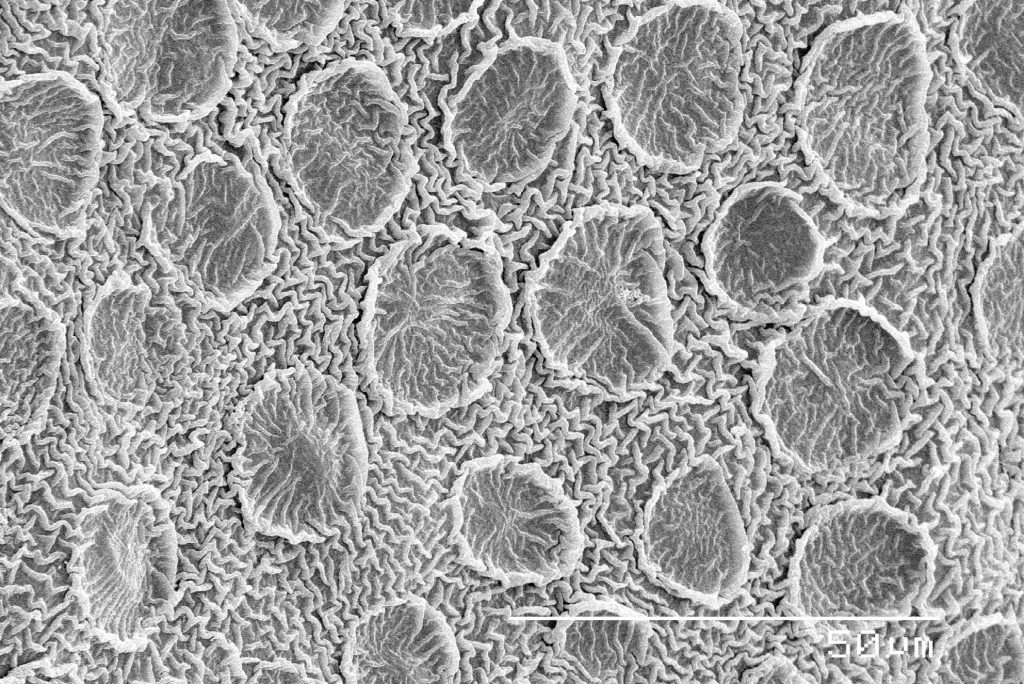 image source: rd.com
image source: rd.com
You might want to reconsider the next time you say that a rose is one of the most beautiful flowers, or thanking your nearest and dearest for buying you a bunch of them! And to think you've probably stuck your nose in there, too, to take a big sniff of the flower that ultimately looks like this when it's up close and personal under a microscope. What you can see here are actually the glands of the flower on the petal. And it's not so beautiful when it's black and white and not red or pink, is it? Still, they look nice in a vase!Advertisement

